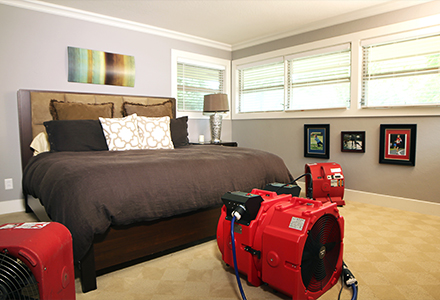Reliable Bed Insect Treatment Techniques: A Key Component of Insect Control
The resurgence of bed bug invasions has highlighted the necessity for reliable treatment strategies within the parasite control industry. These durable insects, with the ability of escaping standard approaches, require a diverse technique that integrates both standard and ingenious methods. Comprehending their habits is vital, as is the application of sophisticated technologies and preventive measures. Regardless of the variety of choices available, the inquiry stays: what combination of strategies verifies most efficient in not just removing these bugs but additionally avoiding their return? Exploring this intricate problem can lead to even more informed techniques and much better outcomes for those affected.
Recognizing Bed Bug Habits

One of the defining characteristics of bed bugs is their capacity to recreate rapidly. A solitary woman can lay hundreds of eggs in her lifetime, leading to speedy population development if left untreated. Additionally, bed pests can make it through for several months without feeding, permitting them to endure durations of host absence, which can prevent timely monitoring efforts.

Typical Treatment Approaches
While contemporary methods to bed pest administration have gotten popularity, typical treatment methods remain fundamental in dealing with problems. These techniques primarily consist of chemical therapies and physical interventions.
Chemical chemicals, such as pyrethroids and neonicotinoids, have been traditionally employed to remove bed bugs. These compounds function by interrupting the nerves of the insects, bring about their eventual death. However, because of the growth of resistance among bed pest populations, efficiency can differ.
Physical approaches, including warm therapy, have also become part of traditional techniques. This entails elevating the temperature of plagued locations to a dangerous level for bed bugs, normally around 120 ° F(49 ° C) for continual periods. This technique is especially useful as it can penetrate various materials and does not leave chemical residues.
Moreover, comprehensive cleaning techniques, such as vacuuming and washing infested bed linens and clothes, are important in this method. Sealing splits and crevices, along with utilizing mattress encasements, can additionally avoid bed pests from establishing themselves in living spaces. Collectively, these traditional methods supply an essential structure for managing bed bug infestations properly.
Modern Innovations in Treatment
The landscape of bed pest treatment has actually advanced substantially with the introduction of modern technologies that improve effectiveness and effectiveness in managing problems - Bed bug Exterminator. One of one of the most notable innovations is the use of heat therapy, which involves increasing the temperature of plagued locations to levels dangerous to bed insects. This approach not only gets rid of adult insects yet also targets eggs, hence disrupting their reproductive cycle
One more innovation is the application of innovative tracking systems, such as bed pest detection canines and high-tech traps outfitted with sensors. These tools aid identify invasions early, permitting for timely intervention. Furthermore, the growth of insecticides with novel modes of action, developed to get over resistance, ensures that bug control specialists have effective options at their disposal.
Moreover, the assimilation of technology in insect control administration, such as information analytics and mobile applications for monitoring and reporting infestations, improves the therapy procedure. These technologies collectively add to more lasting and reliable bed pest monitoring strategies, showing the market's recurring dedication to boosting pest control outcomes. Therefore, both homeowner and parasite management professionals can approach infestations with greater confidence and precision.
Preventative Procedures for Invasions
Efficient avoidance methods are critical in decreasing the threat of bed pest problems, with proactive measures playing an important role in safeguarding both residential and business rooms. Among one of the most efficient techniques is normal assessments of living and workspace, particularly in areas where people frequently collect, such as hotels and public transportation. Early detection can substantially reduce the chances of an invasion coming to be established.
:max_bytes(150000):strip_icc()/Bed-bug-control-tips-and-tricks-2656377-e580f433c55a4a98826e429753062084.jpg)
An additional preventative procedure includes the cautious evaluation of pre-owned furniture and clothing prior to bringing them right into your area. Using protective coverings on cushions and box springs can also provide a reliable obstacle against bed bugs.
Lastly, enlightening citizens and workers about the indicators of bed insect presence, such as tiny blood spots or dark areas on sheets, empowers people to act rapidly if they suspect a problem, consequently decreasing the likelihood of prevalent problems.
(Bed Bug Treatment)
When to Look For Specialist Assistance
Acknowledging the signs of a bed bug problem beforehand can make a considerable difference in managing the issue properly. Little, brownish pests, in addition to rustic stains on bed linens, are signs that should not be forgotten. If these indications appear, it is essential to analyze the intensity of the situation.
Bed bugs are notoriously resistant, and their capacity to hide in hard-to-reach areas makes complex therapy initiatives. If you discover that bed insects come back despite duplicated efforts to remove them, it may be time to get in touch with an insect control professional.
Finally, people with allergies or respiratory problems need to prioritize professional intervention. The chemicals made use of in insect control can position health and wellness threats otherwise used appropriately. Ultimately, engaging a certified insect control service makes sure a thorough and effective resolution to bed bug problems, safeguarding your home and health.
Conclusion
Effective bed bug treatment techniques are essential in controlling infestations and mitigating their impact. A comprehensive approach that combines typical approaches with modern-day advancements improves treatment efficacy and addresses resistance concerns. Preventative actions and normal assessments play a crucial role in reducing the chance of problems. Eventually, understanding bed bug actions and recognizing when to seek expert support ensure that reliable administration techniques are used, adding to long-lasting pest control success.